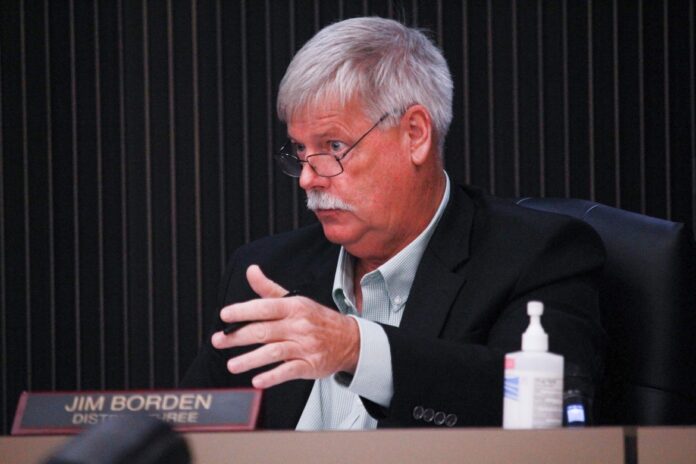With population changes shown in the most recent Census data, Walker County will be forced to redistrict to keep population numbers in each district close enough to federal mandates. Members of the Walker County Commission discussed Monday a redistricting plan presented by Mike Short, the county’s engineer.
Short said he had met with officials with Alabama State University to come up with a plan for redistricting. ASU was only used for assistance with the project. He presented a map to commissioners, which would see several changes in district lines.
“Populations have shifted to where the populations are above the mandatory 5 percent difference,” Short said. “The only mandate is we provide new distict lines, but a commissioner cannot change districts.”
Walker County, according to the 2020 Census, has a population of 65,342, meaning each district should have roughly 16,335 residents with a 5-percent margin – negative or positive – for differentiation. District 1 is the only area over that 5 percent, and it is by only .03 percent. That district grew by 821 people.
Short said the map he provided not only took into account population, but also road mileage in each district.
“This proposal is based on population, but it more equitably distributes the road miles to each district,” Short said.
District 1 Commissioner Keith Davis said the proposal “drastically” changes district lines.
“Before, it has been taken from the city of Jasper so it doesn’t change the voters that have been in certain districts,” Davis said. “That’s how it has been for 30 years. We can’t approve this today. We have to have three weeks publication and a public hearing. In my opinion, we should take this to a work session.”
Davis and Short agreed “there is an easier way to do this.”
District 3 Commissioner Jim Borden said his district is the largest in the county as far as mileage with 325 miles and gets 25 percent of the county’s funding.
“A redistricting in miles would put us on a level playing field,” he said. “You just have to adjust the miles to change up the population difference.”
District 4 Commissioner Steven Adderholt said tax money is split by districts only by population.
Davis again said the proposal before the commission on Monday “drastically” changes district lines.
“This would give District 1, which is growing in population, more mileage,” Davis said.
Borden responded with, “you don’t want the miles, but I’ve got too many miles.”
Davis said if he has 100 people living on one road that it must be serviced more than a road that has two people living on a road the same length.
“There is a way to do this that would be more simple,” he said. “I think we have a base here to work from, but we need a work session to have time to discuss it all. I would like to see an A, B and C plan.
“Again, I understand and hear Commissioner Borden, and I want this to be a fair plan for all four districts,” Davis added.
Aderholt said the proposal given Monday would stretch his district into a less densely populated district.
“The fundamental argument here is that we spend tax dollars on citizens and not roads. The more populated roads are going to, in essence, have more funding,” Aderholt said. “People choose to live where they want to live. We can’t justify that every road in the county should get an equal amount of money. That’s not reality.”
District 2 Commissioner Jeff Burrough said he would like to see the residents in Jasper split to solve the population issue with some changes in roads as well.
Commissioners voted to table the issue and bring it up at a work session later in the month. Work sessions were scheduled for Tuesday, Aug. 9 and Wednesday, Aug. 17. Both will be held inside the commission meeting chambers at 10 a.m. Redistricting and budget matters will be discussed.





Never forget why you started the Community-Journal. The hedge fund owners do not get it. That ignorance is destroying the newspaper business. Your hard work will payoff.